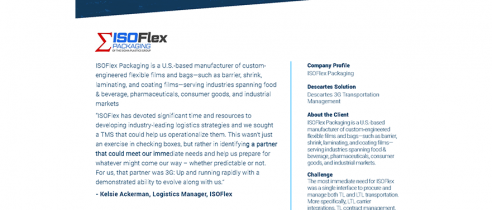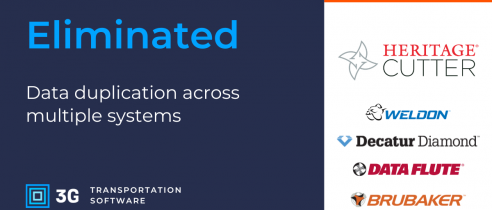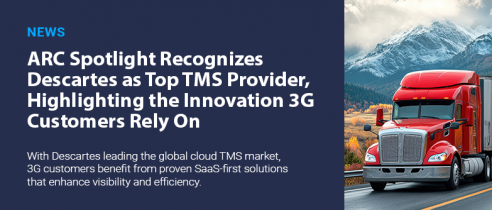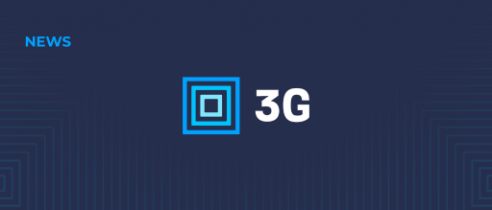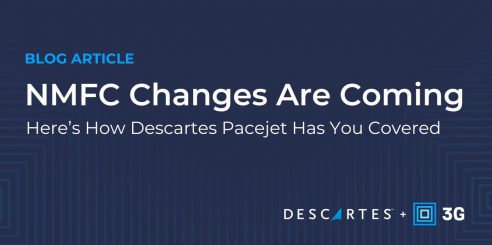Blog
TMS Buying Guide | Part 4- When You’ve Outgrown Your Transportation Management System

When You’ve Outgrown Your Transportation Management System
Outgrowing an old system is a gradual process, which means it can be difficult to pinpoint when to make a change.
Unless you know what to look for, it can sneak up on you through incremental workflow slow-downs and inefficiencies. There comes a time when you need to assess how circumstances have changed since the original purchase and whether that purchase is holding you back from future growth.
No matter if your brokerage is brand new or more mature, chances are you’ll reach a point where your transportation management system (TMS) no longer aligns with the demands of your business.
How to tell when it’s time for a new TMS
To help identify when it’s time to make a change, you must take the pulse of the situation. There are signs to notice, questions to ask, and challenges & obstacles that would prove a change is needed.
Brokerages in their early growth stages will have different signs compared to established brokerages, as newer businesses often face different challenges. Here are the factors to consider for growth-stage and established brokers.
Growth-stage brokerages
Common challenges and obstacles:
1. Reliance on spreadsheets or single-use digital tools
Spreadsheets and single-use digital tools require extensive manual intervention while providing only limited functionality. Multiplied by how frequently employees visit these tools, it takes a significant amount of time out of the day to handle even the most basic tasks.
2. Inability to connect to customers’ other systems
If the broker’s transportation management system is not built to connect with customer accounting software or ERPs (enterprise resource planning systems), it limits access to information that can produce more efficient operations. With ERP integration, brokers can more easily transact with customers and respond to their needs.
With these obstacles, brokerages must decide whether to stay with their current tech stack or invest in a TMS upgrade, by asking the following questions:
1. What is my growth projection over the next year? Over the next 3 years? – The recommended approach is to have the tech stack undergo changes alongside business growth, keeping pace with demands instead of lagging behind. Significant growth expected in the long-term is not a reason to delay changes in the present—this would only create an obstacle to that growth.
2. Is the brokerage adding new services beyond TL, such as LTL? – Before opening up new services, you must plan and prepare the tech stack for the new demands. The ideal scenario is having a TMS with the flexibility to add on functionality when it’s needed. It’s important to ensure the options are available for any changes to be made in the future.
What growth-stage brokers should look for in a TMS:
- Ability to connect with virtually any ERP and other accounting or supply chain systems
- Scalability and cost-effectiveness for evolving with the business in the long-term
- A single source of truth for basic and advanced reporting
- Established, expanding, and multiservice brokerages
Common challenges and obstacles:
1. Limitations that prevent offering new services
Established brokers typically need more advanced tools beyond simple order management and tracking. Investing in new services can reveal current systems’ limitations. A broker established in full truckload might be unable to offer LTL due to the TMS’s inability to support it.
2. Lacking the tools to offer freight optimization
Customers are increasingly looking for the benefits of optimization for their freight. Brokers looking to expand into managed services understand this, especially when it comes to LTL. They need the advanced algorithms necessary to bring LTL optimization to their customers.
Mature but expanding brokerages must ask the following questions when considering the right time for a TMS upgrade:
Is the brokerage adding new services or lines of business in the coming year? – Can the current TMS support these plans, including any potential transition into managed services?
What, if any, workflows rely on manual processes? – What opportunities are there to increase efficiency, automate processes, use AI to optimize route planning, or offer in-depth reporting? How much time and money can be saved, or how can these features benefit the customer?
What established brokers should look for in a TMS:
- Carrier management features for increasing efficiency
- Customizable customer and carrier onboarding
- Configurable connections with any ERP or other core system
- Centralized and simplified reporting to identify new opportunities for cost savings, enhanced profitability, process automation, and efficiency
Supporting business growth
Every broker needs systems and tools to run their business. As the business grows and increases in complexity, legacy TMS tools can become obsolete and hinder planned growth if they don’t have the capabilities required to sustain an expanding business.
3G’s TMS offers brokers in-depth functionality for current and projected demands and new areas of investment, with the flexibility to meet business needs at each stage along the way. Schedule a demo to see 3G’s TMS in action.
